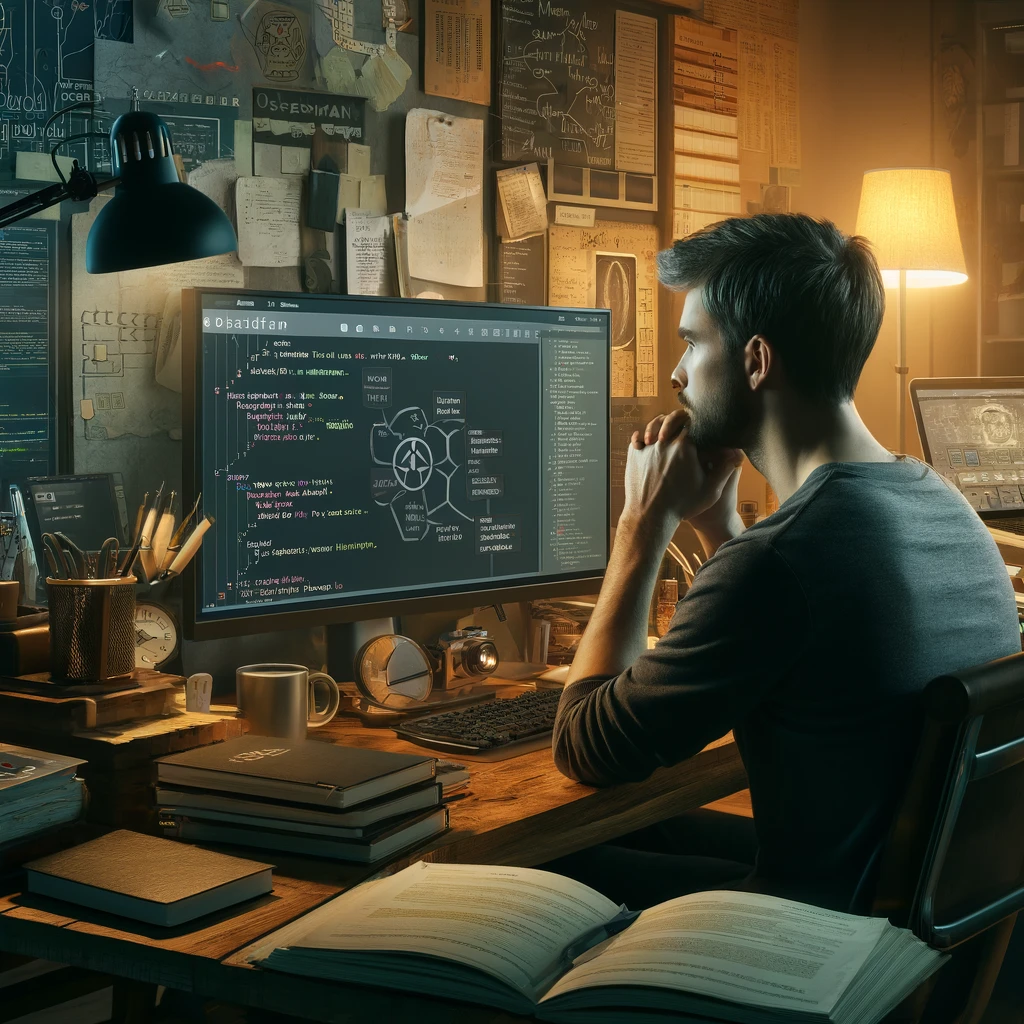
TL;DR (too long; didn’t read)
- Launched a personal blog with diverse content ranging from technical to personal insights.
- Explained the process behind using Obsidian as a CMS for the blog.
- Emphasized the importance of curiosity and exploration over merely achieving outcomes.
- Discussed how the blog integrates with tools like ChatGPT for coding and creating content, including generating image prompts.
- Highlighted a preference for discovery and learning through self-directed projects.
Forewarning
I expect to have many different types of audiences, because there are many dimensions to my personhood. Therefore, some of my content will be highly technical, and much of it will be very personal and approachable.
This particular post contains a bit of technical as I explain my process building a blog. If you’re not super technical, don’t worry, and just skip over the words that sound technical. Or if you’re curious, go deep down the rabbit holes I open up by clicking the links for the technical words.
The Hard Way
I went about it the hard way, because that’s what curiosity demands. I became obsessed with the idea of - “just write.” Kind of the ethos behind the creation of the Markdown standard in the first place. Side note, I absolutely love Markdown, but more on that in a future post.
Anyway, I wanted to use my note-taking tool, Obsidianas my CMS (Content Management System). In other words, I wanted to save a Blog post in Obsidian and have it automatically show up on my blog.
I got the idea from Matthias, my coworker. He blogs about it a couple of times here. Excellent idea, Matthias.
So, the last few weekends I was obsessed with making it work. I spent countless hours piecing it together, beginning with a different framework than Matthias used (Next.JS / React), and using the GitHub REST API instead. Mostly because my curiosity, and my Ne (Extraverted Intuition) demands Exploration. Because, I ultimately ended up with something very similar to what Matthias had already built. I switched to Astro and the GitHub GraphQL API by the end.
Why the Hard Way?
In truth, I could have followed his blog posts to a tee in the first place, but I’m not sure I would have learned as much. Nor would I have evolved in my communication with ChatGPT.
By the way, ChatGPT is involved in a strong amount of the things I do day-to-day, and very, very involved when I’m coding. I’ve built a robust set of custom instructions that has made in an excellent coding & ideation copilot. More on that in future posts.
— That’s already the second time I’ve said that, I had better create a note for what future posts I plan to write —
ANYWAY… the moral of the story is— I’m curious, and most of the time I do things for curiosity’s sake, not necessarily for the outcome. Because I could have easily fired up a WordPress Blog in no time and copied & pasted content from Obsidian.
That would have been more conducive to prioritizing execution. But I’m not prioritizing execution in this case, I’m prioritizing exploration.
So, what did I learn?
- GitHub Actions, GitHub API, a bit of Next.JS, a bit of Astro, working in a serverless environment (Vercel)
- You must know when to prioritize execution or exploration.
- or at least make a good guess, sometimes you’ll miss, but learn from your mistakes
- and never stop exploring
P.S. My images are generated by ChatGPT.
I send it my whole blog post and say “Create an image prompt for this blog post:” then I use whatever prompt it gives, in this case it was the following prompt:
- Foreground: A man (early 30s) sitting at a modern, cluttered desk filled with tech gadgets like multiple monitors, notebooks, and a visible Obsidian app on one screen. They are deep in thought, looking at a screen showing a complex flowchart or code.
- Background: Open books and notes related to Markdown, coding, and personal development theories scattered around.
- Atmosphere: The room is dimly lit with a soft, warm glow from a desk lamp highlighting the intense focus of the person. There’s a sense of organized chaos that reflects a creative and inquisitive mind at work.
- Style: The artwork should be semi-realistic with a focus on vivid details to emphasize the technical and personal aspects of the blog’s content.